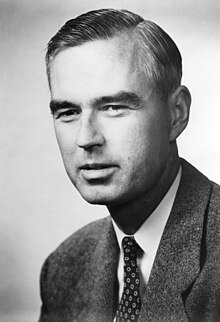
Back ويليس لامب Arabic ويليس لامب ARZ Uillis Lemb Azerbaijani ویلیس اوژن لمب AZB Уіліс Юджын Лэмб Byelorussian Уилис Лам Bulgarian উইলিস ল্যাম্ব Bengali/Bangla Willis Lamb Catalan ویلیس لەمب CKB Willis Eugene Lamb Czech
Willis Lamb | |
|---|---|
 Lamb in 1955 | |
| Born | Willis Eugene Lamb Jr. July 12, 1913 Los Angeles, California, U.S. |
| Died | May 15, 2008 (aged 94) |
| Alma mater | University of California, Berkeley |
| Known for | Lamb shift Lamb–Mössbauer factor Laser Theory Quantum Optics |
| Awards | National Medal of Science (2000) Einstein Prize for Laser Science (1982) Guthrie Lecture (1958) Nobel Prize in Physics (1955) |
| Scientific career | |
| Fields | Physics |
| Institutions | University of Arizona University of Oxford Yale University Columbia University Stanford University |
| Thesis | I. On the Capture of Slow Neutrons in Hydrogenuous Substances, II. Electromagnetic Properties of Nuclear Systems (1938) |
| Doctoral advisor | J. Robert Oppenheimer |
| Doctoral students | Bernard Feld (1945) Robert Retherford (1947) Norman Kroll (1948) Theodore Maiman (1955) Marlan Scully (1966) Balázs László Győrffy (1966) |
Willis Eugene Lamb Jr. (/læm/; July 12, 1913 – May 15, 2008) was an American physicist who won the Nobel Prize in Physics in 1955 "for his discoveries concerning the fine structure of the hydrogen spectrum." The Nobel Committee that year awarded half the prize to Lamb and the other half to Polykarp Kusch, who won "for his precision determination of the magnetic moment of the electron." Lamb was able to precisely determine a surprising shift in electron energies in a hydrogen atom (see Lamb shift). Lamb was a professor at the University of Arizona College of Optical Sciences.